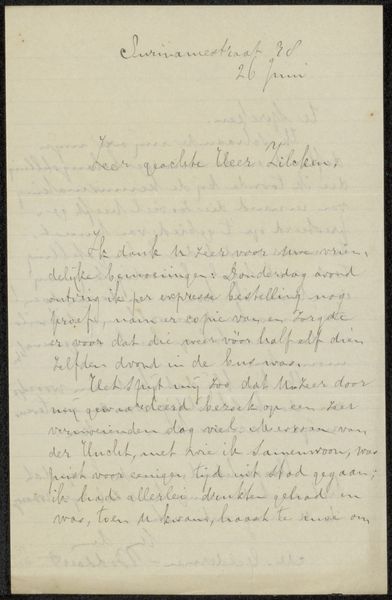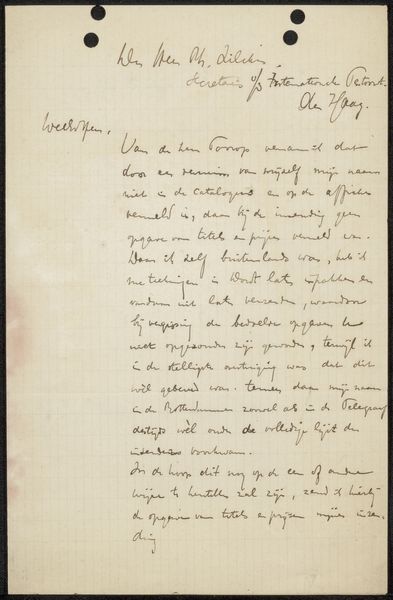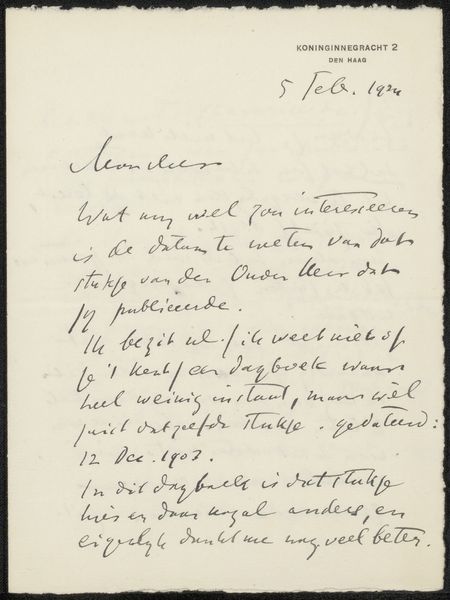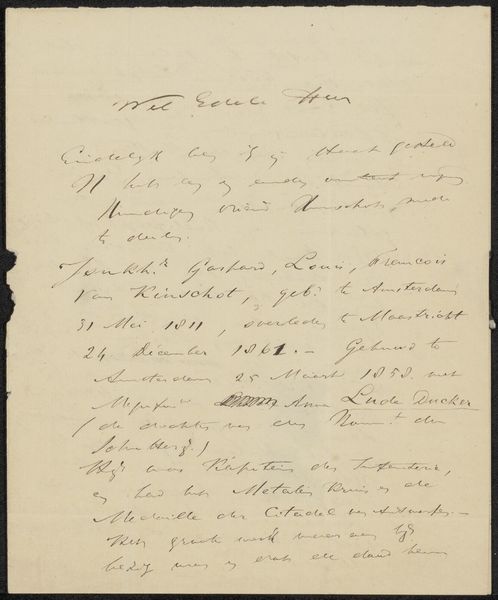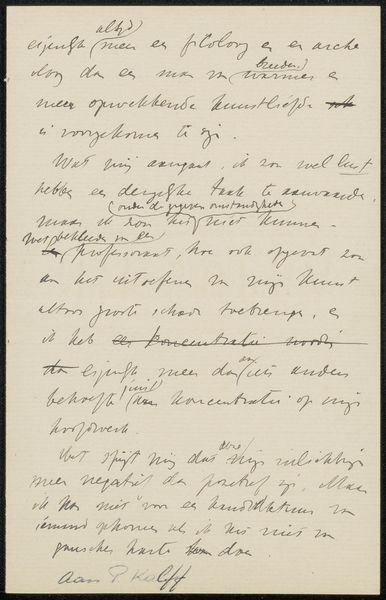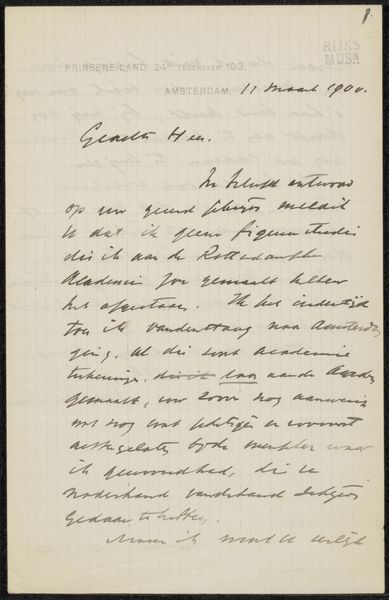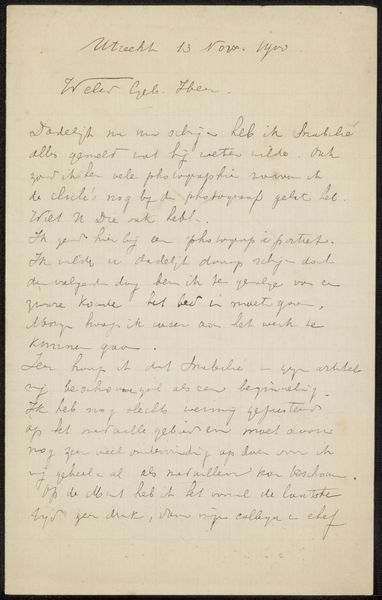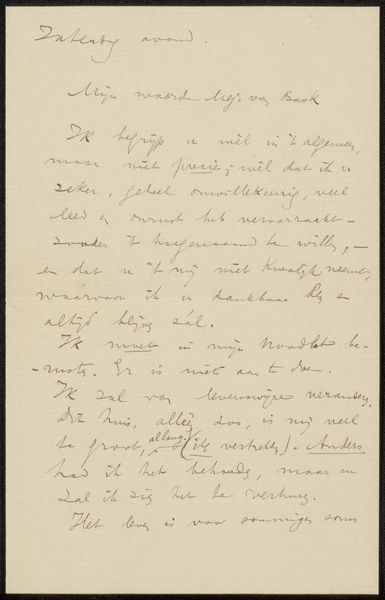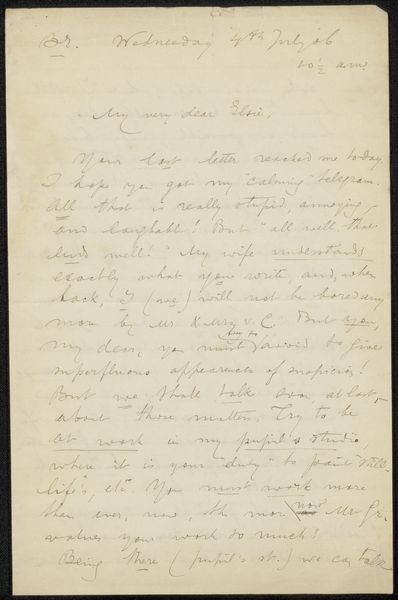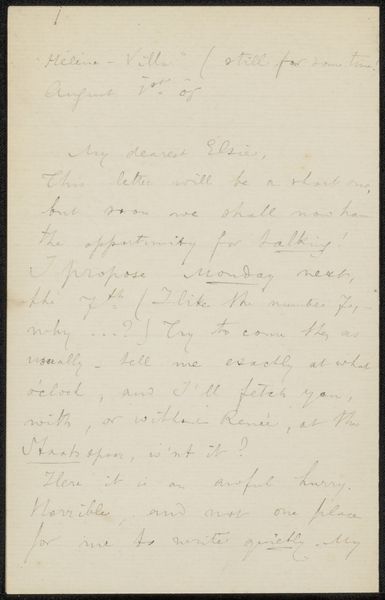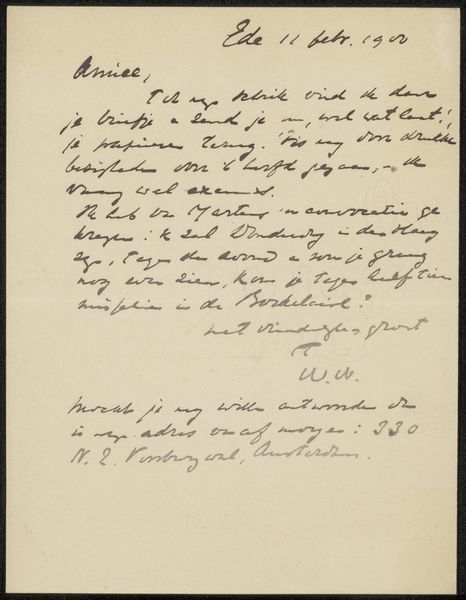
drawing, paper, ink, pen
#
drawing
#
script typography
#
hand-lettering
#
hand drawn type
#
hand lettering
#
paper
#
personal sketchbook
#
ink
#
hand-drawn typeface
#
pen-ink sketch
#
pen work
#
sketchbook drawing
#
pen
#
sketchbook art
Copyright: Rijks Museum: Open Domain
Curator: So, we have here "Brief aan Philip Zilcken," a drawing possibly from 1929, by A. de Haas, done in ink on paper. It looks like a handwritten letter. What are your initial thoughts? Editor: It feels incredibly personal, like a glimpse into a private moment. The script gives it an intimate feeling, and the fact that it's hand-drawn makes it seem very fragile and delicate. I’m curious about its purpose. How do you interpret this work, and what might it reveal about the relationship between the artist and Philip Zilcken? Curator: That feeling of intimacy is key. Think about the act of letter writing in the early 20th century, before digital communication. Letters were powerful tools for forging relationships, disseminating ideas, and preserving history. As a 'brief,' or letter, it is positioned within a historical discourse, so who were these figures, and what can the intersectional analyses of class, gender, race and politics say about the discourse that defines this space? The gestural nature of handwriting conveys emotion and presence in a way that typed text often can’t. This letter embodies a form of activism because written correspondence allowed individuals to transcend geographical boundaries and express themselves within restrictive socio-political environments. What aspects of identity and power dynamics are revealed by the letter's content and tone? Editor: That's a good point; handwritten text definitely has more… weight. So the choice to send this information as a letter, versus another medium, shows something in and of itself? Curator: Precisely. De Haas isn't just conveying information; they're constructing an identity and a relationship. How does the very act of handwriting, the choice of language, contribute to a performance of self and solidify their personal and political intentions? How do we deconstruct what it may say in terms of social context, or their individual status? Editor: I hadn't considered the performative aspect of it before. I see now it isn't just what the letter says but how it says it. Curator: Exactly! It underscores the agency inherent in the written word, particularly in historical contexts where access to communication channels was limited. Understanding this helps us appreciate how art, even in a seemingly simple form like a letter, can challenge power structures and contribute to social change. Editor: That's fascinating! I’ll definitely look at letters and other text-based art differently now.
Comments
No comments
Be the first to comment and join the conversation on the ultimate creative platform.
